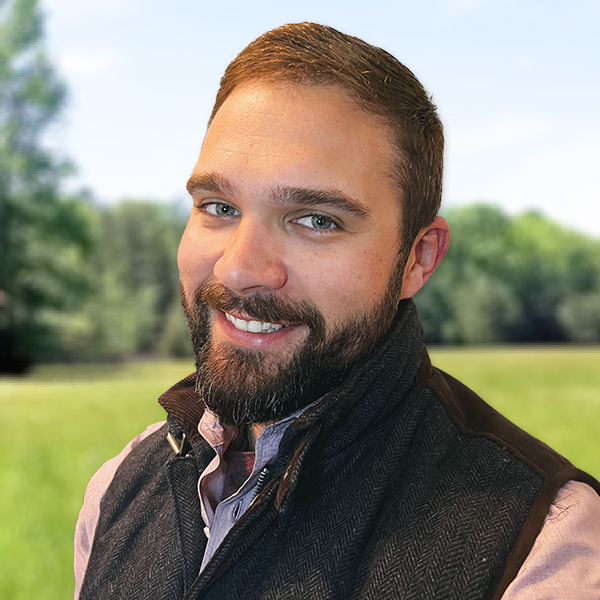2025
Comparably’s Best Company Outlook
* Providing engineering services in these locations through SWCA Environmental Consulting & Engineering, Inc., an affiliate of SWCA.

From the experts we hire, to the clients we partner with, our greatest opportunity for success lies in our ability to bring the best team together for every project.
That’s why:
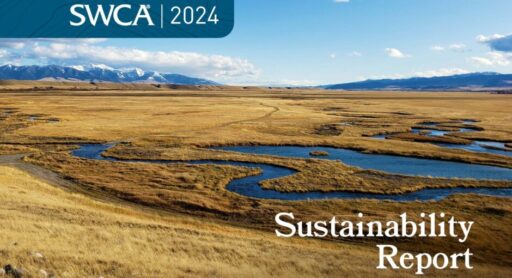
At SWCA, sustainability means balancing humanity’s social, economic, and environmental needs to provide a healthy planet for future generations.
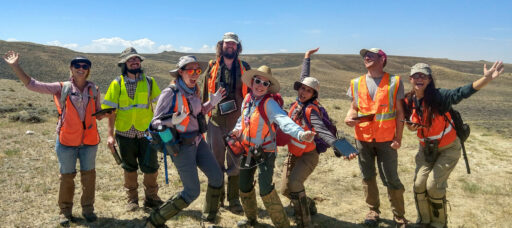
SWCA employs smart, talented, problem-solvers dedicated to our purpose of preserving natural and cultural resources for tomorrow while enabling projects that benefit people today.

At SWCA, you’re not just an employee. You’re an owner. Everyone you work with has a stake in your success, so your hard work pays off – for the clients, for the company, and for your retirement goals.
Edgecomb Creek Stream Restoration Design
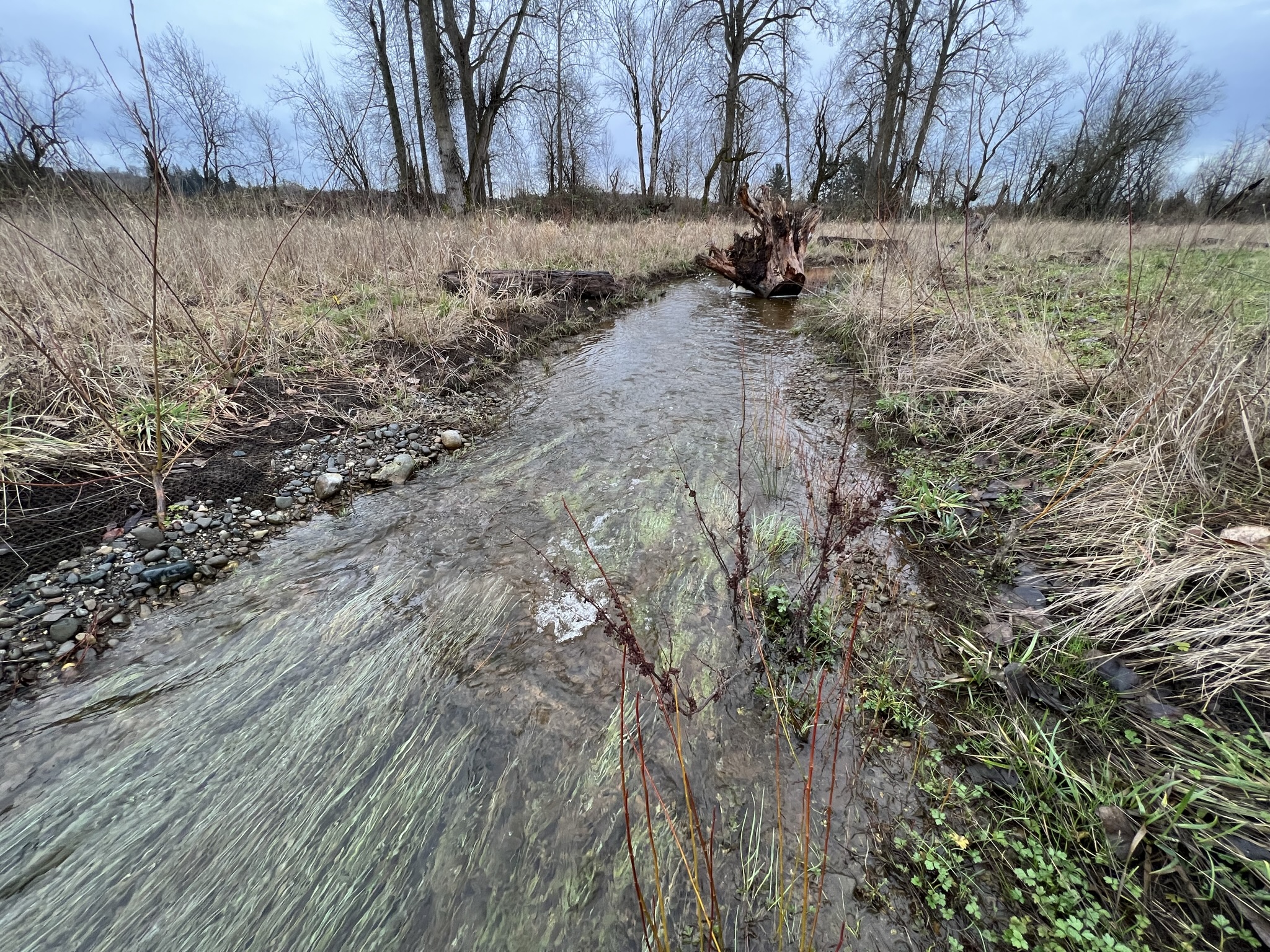
SWCA designed stream restoration options for Edgecomb Creek in Snohomish County as part of the on-site mitigation for converting the once agricultural land to a multi-unit commercial development.

For questions or further information, please fill out the form below.
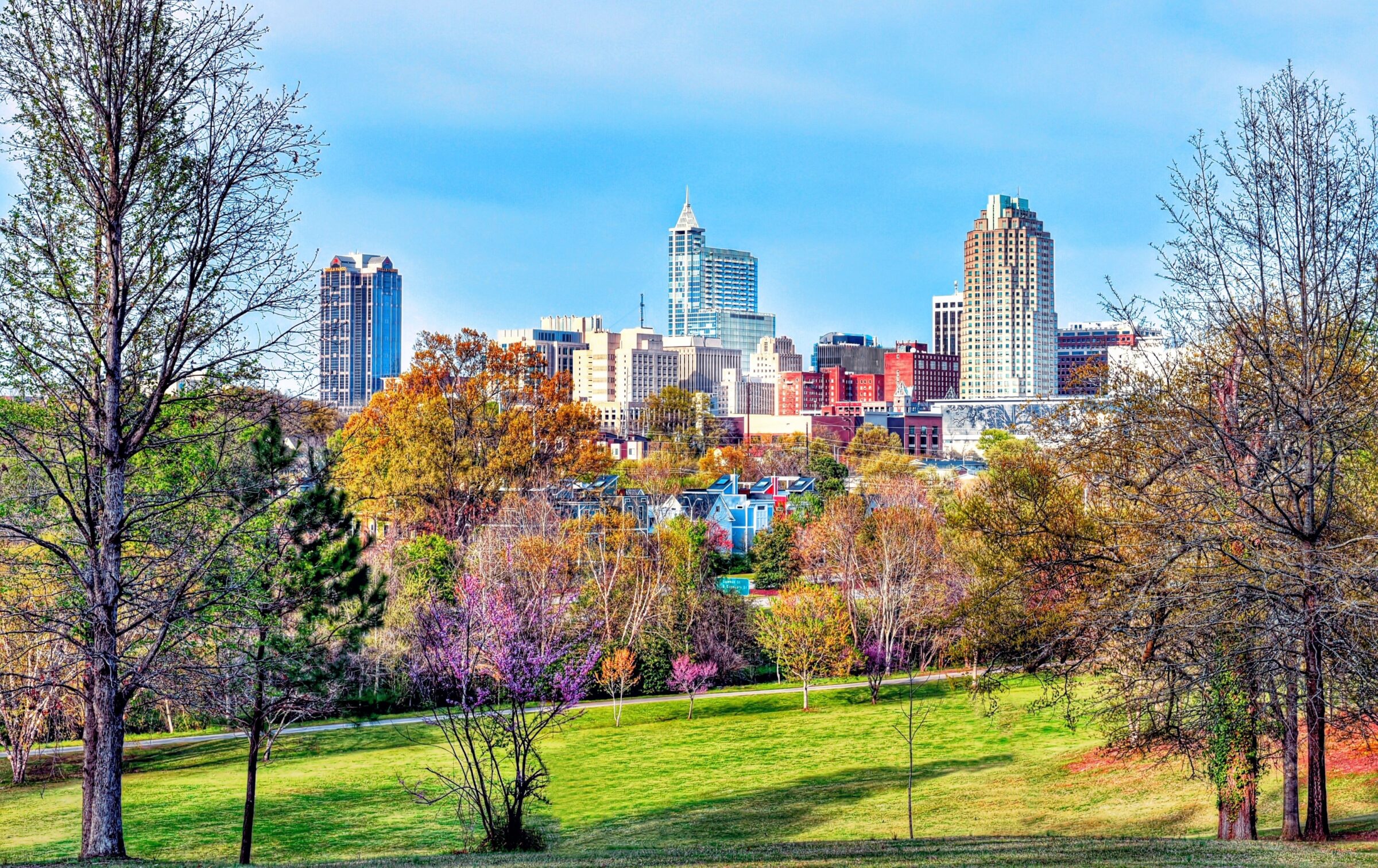
SWCA designed stream restoration options for Edgecomb Creek in Snohomish County as part of the on-site mitigation for converting the once agricultural land to a multi-unit commercial development. The primary goals of the project were to restore channel stability and create a self-maintaining, quasi-stable geomorphic state; restore fish passage, floodplain connection, a riparian vegetation buffer, and aquatic and riparian habitat diversity; and reduce anthropogenic impacts to Edgecomb Creek.
The design was coordinated and reviewed by the Washington Department of Fish and Wildlife and the sovereign Tulalip Tribes. The project will be monitored for 10 years as part of the CWA Section 404 permit requirements to ensure that the stream corridor remains stable and continues to provide adequate ecological function both for the target salmonid species as well as other native aquatic fauna.
The restoration of Edgecomb Creek will provide several improvements in stream ecological functions over the existing degraded stream channel. The majority of the existing stream channel consists of excavated linear ditches in agricultural fields that lack substantial native riparian trees and shrubs, meanders, cobbles or sorting, riffle or pool structures, large woody debris, or floodplain connectivity. The restored stream channel will consist of a meandering channel connected to side channels and wetland habitats within a riparian corridor containing native forest, shrub, and emergent plant communities. Side channels will have different degrees of hydrological connectivity to Edgecomb Creek. Flowthrough side channels will provide off-channel habitat throughout much of the year, while dendrite side channels will provide seasonal off-channel habitat.
In addition, the mainstem and side channels will be enhanced with large woody debris, small woody debris, streambed gravels, and pool and riffle creations. Fish accessibility to the site and upstream reaches of Edgecomb Creek will be improved by the replacement or removal of culverts that currently act as partial fish passage barriers. Once established, riparian habitat corridor will provide immediate and long-term benefits for salmonids and other fish through native plantings that will provide streambank stability, stream shading, stormwater filtration, and wood recruitment; a complex channel system with natural channel sinuosity, pool and riffle structures, and side channels that will provide spawning, rearing, and foraging opportunities; and connectivity to wetland and floodplain habitats that will provide additional water quality improvements, hydrologic regulation, and flood refugia benefits.
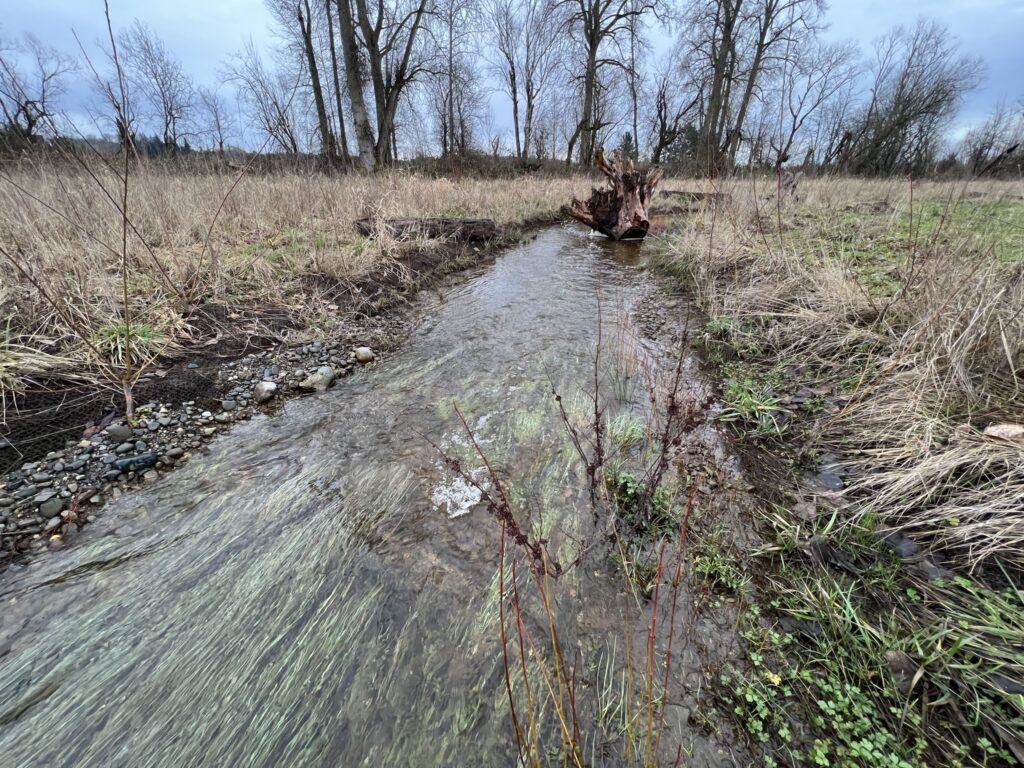
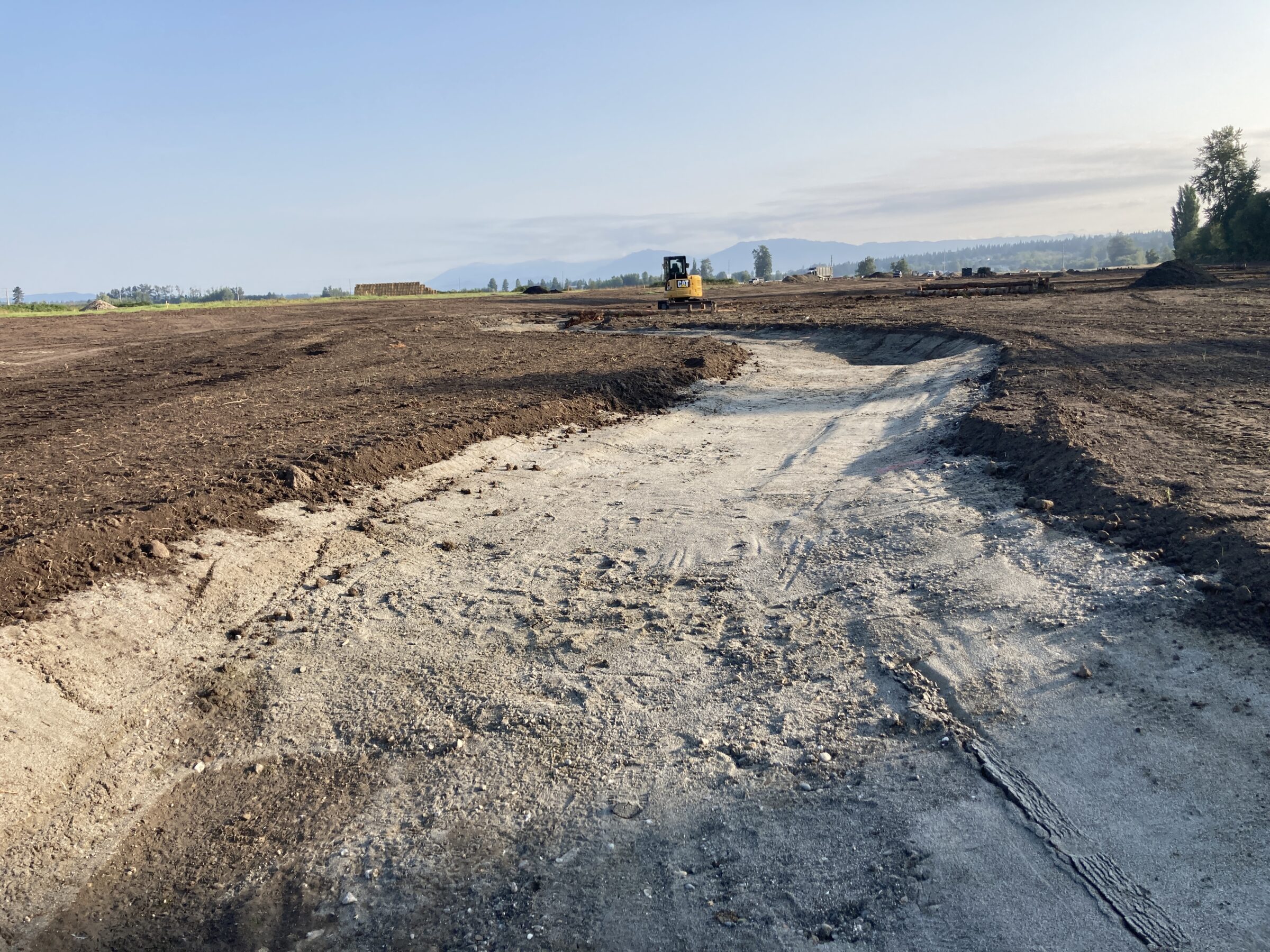
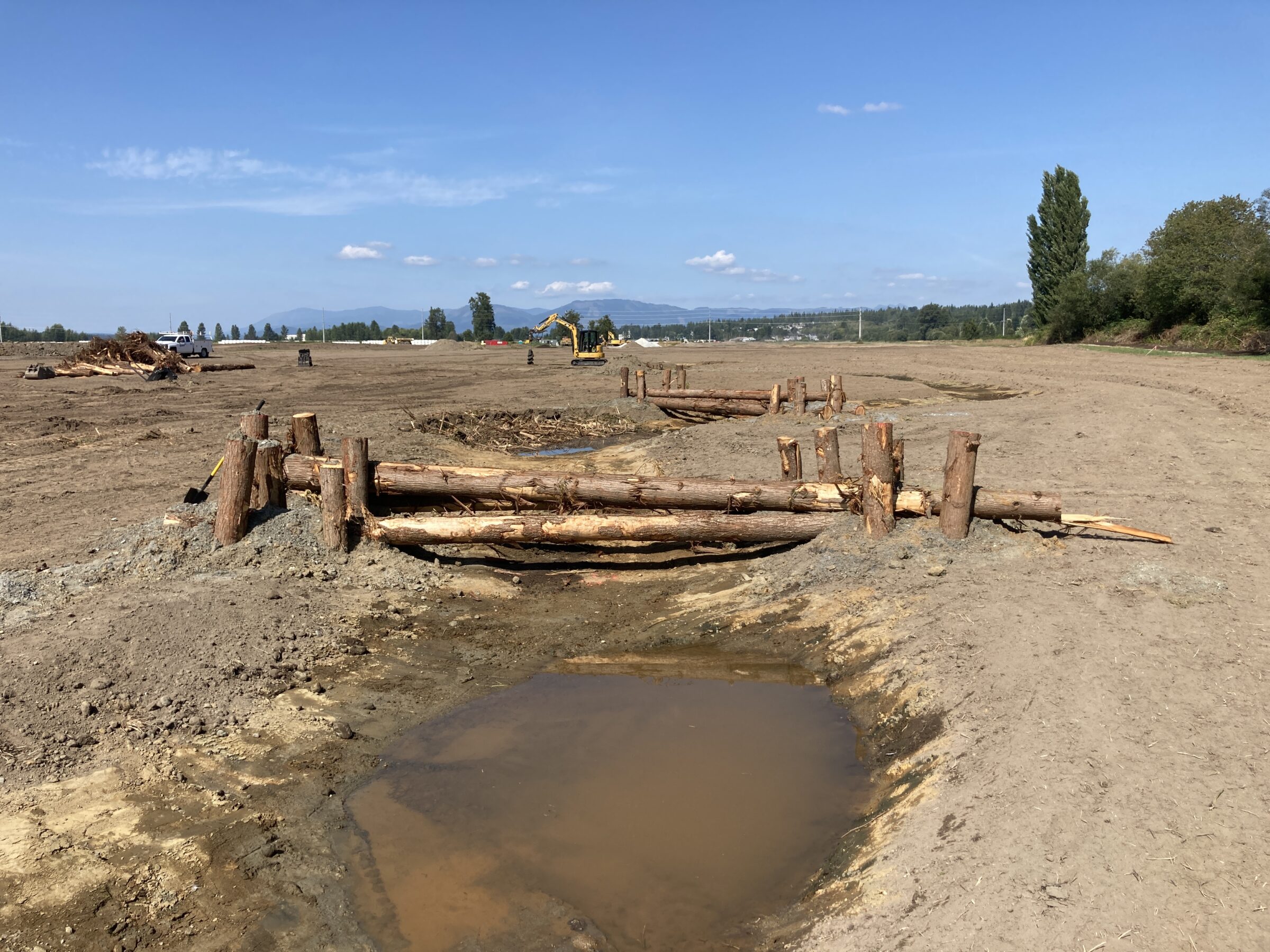
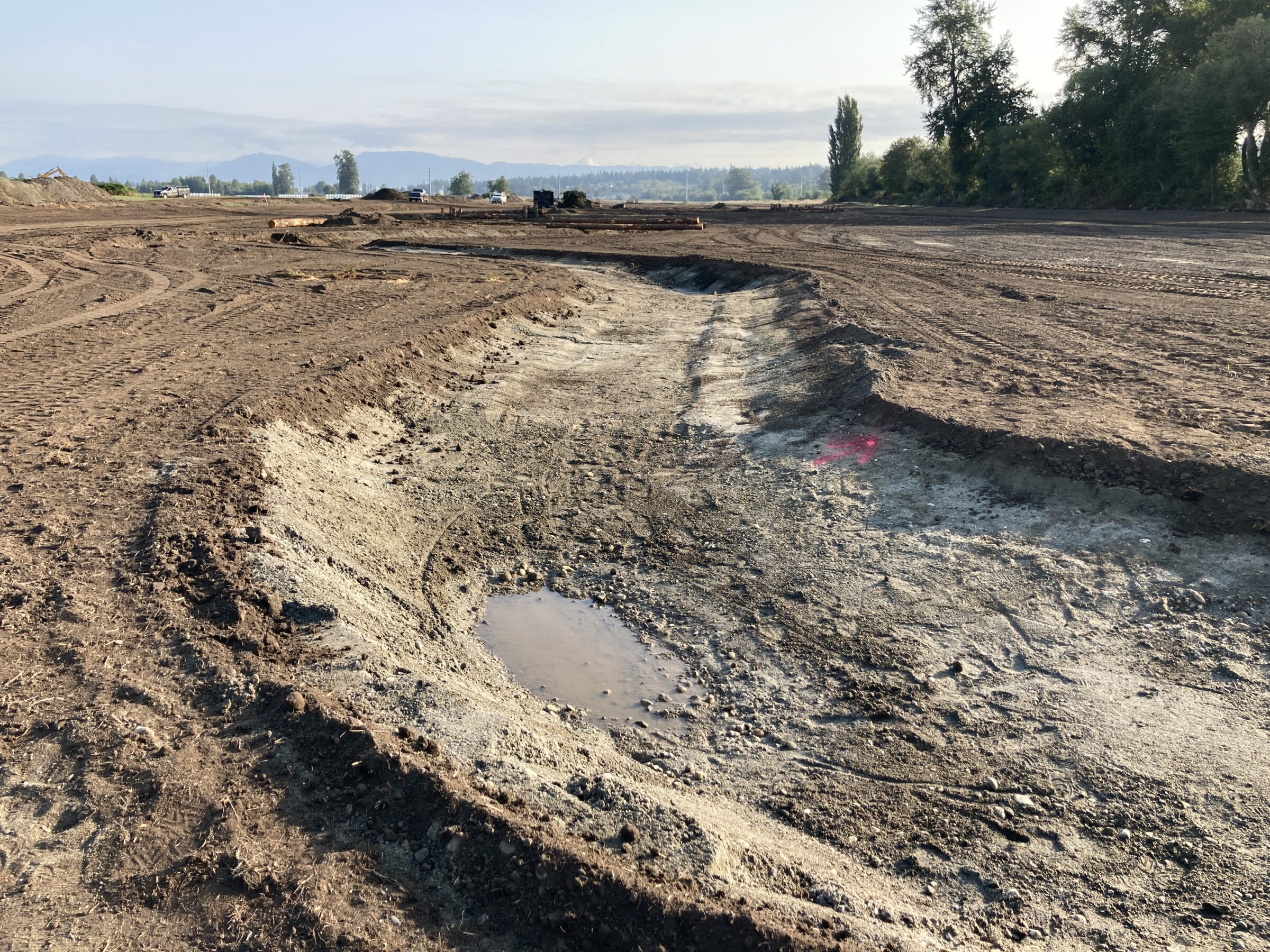
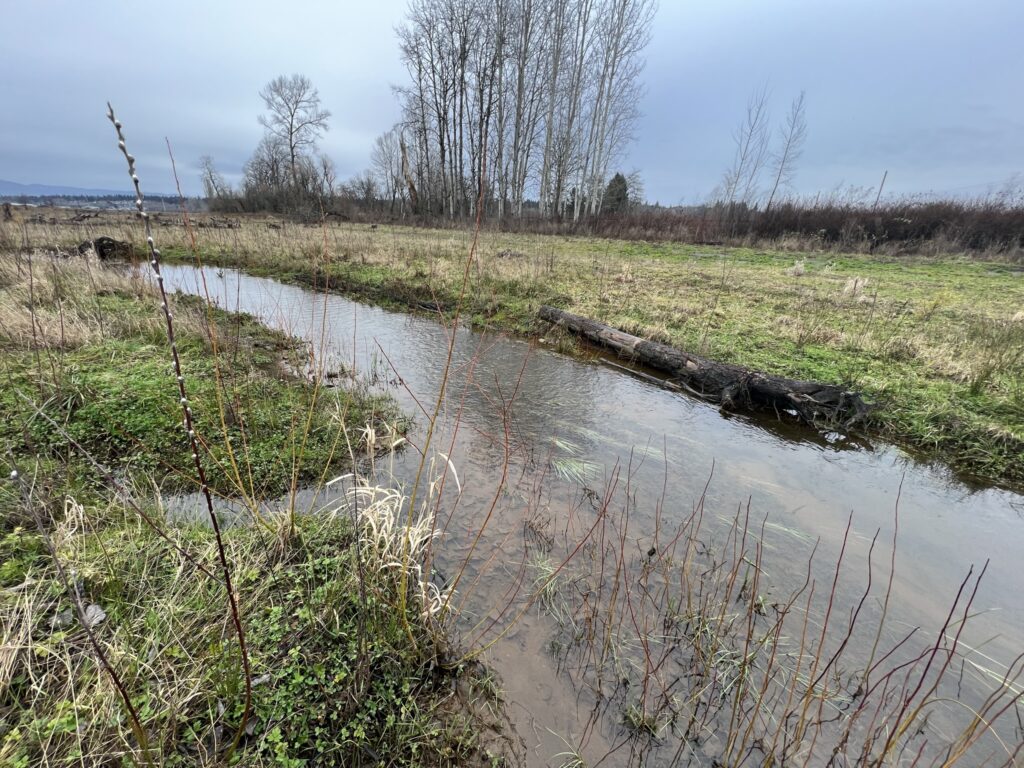
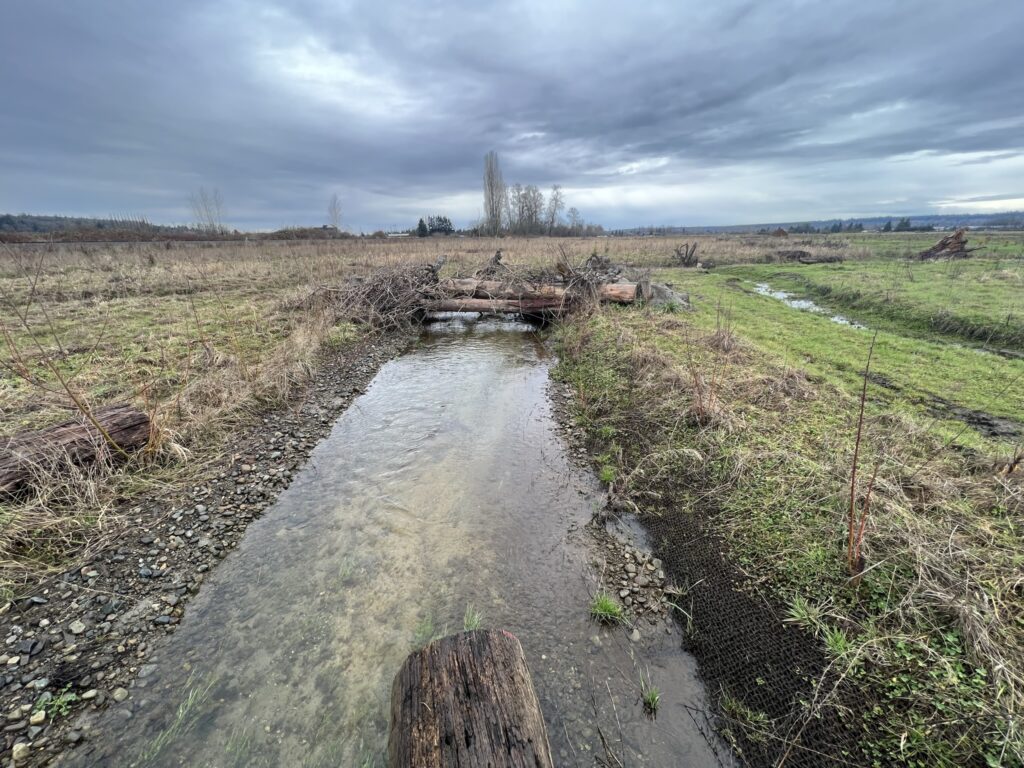
Josh has more than 16 years’ experience working on site stabilization, renewable energy, and ecosystem restoration projects across the country. He has spent much of his career in North Carolina and South Carolina serving both private- and public-sector clients. Josh works on a variety of projects, including solar site stabilization, solar site hydrologic and hydraulic modeling for stability analysis, floodplain vegetation/stabilization, stream and wetland restoration, and resiliency planning. Josh has extensive experience acquiring federal, state, and local permits for his projects, especially erosion and sediment control and stormwater permits such as NPDES Phase II permits, 401 Water Quality Certifications (WQC), and state and local land disturbance permits. All of his projects also have a revegetation component. Revegetation components are typically based on an appropriate nearby reference community and developed to restore the appropriate strata (canopy, understory, shrub, and herbaceous layers) for the site.
